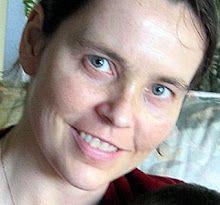I have two different rotations to tell you about this week.
The first one was not officially a “rotation” but was still a lot of fun and I learned a good deal. For two days I shadowed Michelle Babb, a private practice dietitian who also happens to be an instructor at Bastyr so we knew each other ahead of time (always nice to see a familiar face during a transitional time like this internship). It was fairly leisurely, as she had a couple of no-shows, so we talked a lot about the challenges of private practice, about my plans for the future, and about nutritional approaches to different types of problems and different kinds of people.
For the patients that we did see, I was interested in observing a professionally-run nutrition appointment from start to finish. All the appointments were follow-ups so I missed out a bit on the original intake, but was able instead to witness the positive impact Michelle’s counseling had on these people’s lives. Michelle was very generous in asking for my input during appointments and letting me work with her on charting. It was a great introduction to my rotation the following week at the Bastyr Center for Natural Health, which is where I had done my nutrition counseling shifts in the last year of my program.
I had six four-hour shifts, four with NDs (naturopathic doctors), one with homeopathy and one with acupuncture. All the shifts were fascinating and showed me a bigger picture of complementary medicine than I got on my nutrition shifts at BCNH. The homeopathy shift was the most foreign to me, and I did not have a chance to participate in the patient’s care because of the nature of it. Maybe I’ll write more on this later…
Each shift supervisor had their specialty but the structure was generally the same for each shift: get the bigger health picture for the patient, prioritize the most important issues and treat them, with a follow-up plan to address the other issues later. Treatments ranged from individually-formulated botanical tinctures and teas, to pharmaceutical-grade supplements, to antibiotics for a protracted case of UTI, and referrals for imaging or blood tests. In this context, nutrition issues were often supplanted (and rightly so) by more acute medical problems like head colds, shoulder pain, etc.
However, I did my best to chime in when I thought there were ways to address the priority issues with nutrition, or when I felt that a referral to the nutrition department was called for. Most of my patient contact was very short (1-5 minutes) though I did have a 20-minute conversation with a patient with severe involuntary weight loss during which I intuited a more emotional component to the weight loss, and I shared this with the students, though I will not get to find out what the cause actually was (and therefore find out if my intuition was correct). During the midpoint, I got to do some of my handy-dandy nutrition calculations and reassure the students that the patient was still above ideal body weight, and in the end was able to give the patient some input into how to prevent further weight loss. Very satisfying. And for the last appointment of the last shift, and the highlight of my week, I gave a 30-second lesson in how to make calcium-rich bone broth for a child on a dairy-free diet.
I’d say my biggest surprise in this rotation was that I was able to convey important nutrition messages quickly that fit in with the overall plan for the patient. My other surprise was how grateful patients were for my input.
Over the next two weeks, the gears really start turning. I’m working with an outpatient diabetes program and will be teaching two or three classes, including a couple of cooking demos for National Diabetes Month. I’ll have a lot more to say about that rotation in a couple of weeks.
How to Lose Arm Fat
3 years ago

No comments:
Post a Comment